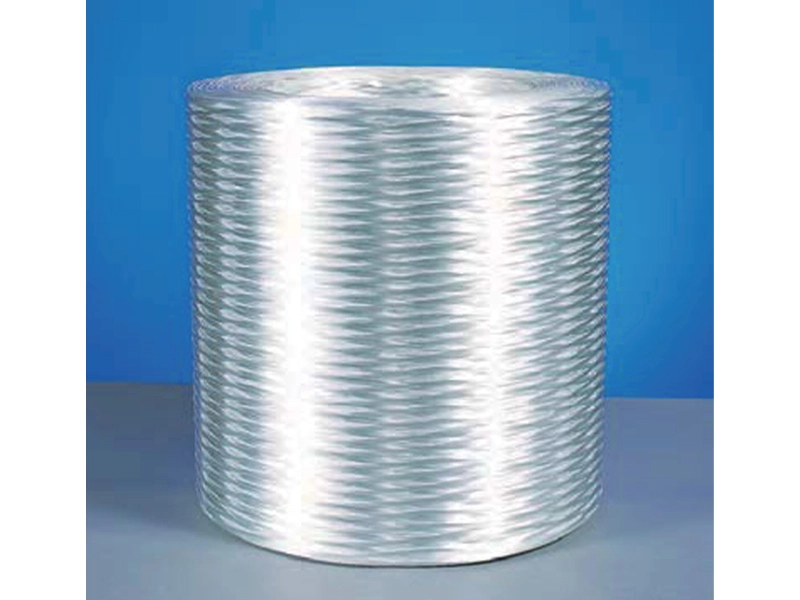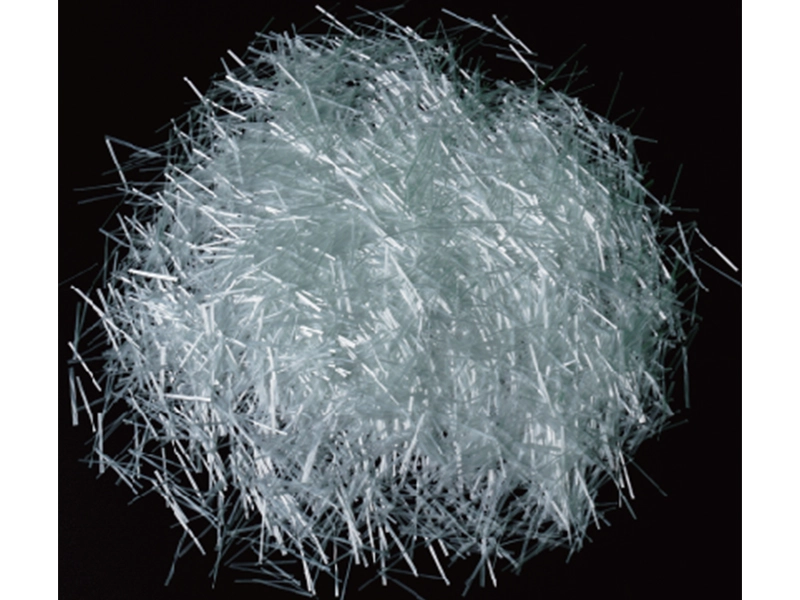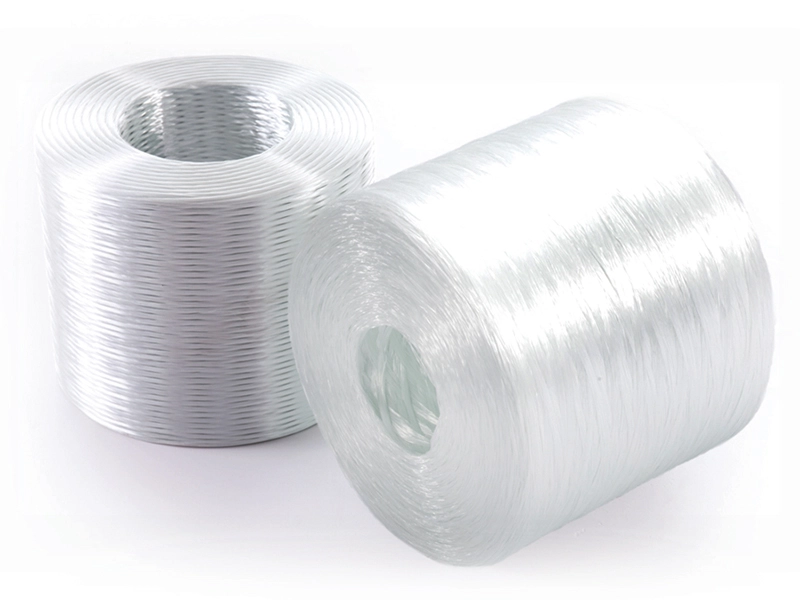Untwisted roving for weaving is a specialized fiberglass reinforcement product that plays a pivotal role in the production of high-performance composite materials. It is primarily used in the manufacture of fiberglass fabrics and woven roving, which serve as reinforcement layers in various industrial applications such as marine, automotive, wind energy, construction, and sports equipment.
Einführung zur Produktleistung
Unlike conventional twisted yarns, untwisted rovings maintain their linear bundle structure throughout processing. This unique construction results in higher fabric strength, improved impregnation properties, and better dimensional stability. As an essential raw material for woven and stitched fabrics, untwisted roving is designed to deliver optimized weaving performance and high-quality composite properties.
2. Product Definition and Structure
Untwisted roving is a bundle of continuous glass filaments grouped together without twisting. Each roving consists of thousands of filaments (typically 2400, 4800, or 9600 tex), which are held together by a binding agent or sizing. The absence of twist allows the roving to lay flat, improving fabric uniformity and enhancing resin wet-out capabilities.
Key Characteristics:
-
Endlosfilamente of E-glass, ECR-glass, or high-performance specialty glass
-
No twist – filaments remain parallel and flat
-
Custom tex values (e.g., 300, 600, 1200, 2400, 4800, 9600)
-
Silane-based sizing compatible with various resin systems (e.g., epoxy, polyester, vinyl ester)
-
Excellent weaving compatibility
3. Manufacturing Process
The production of untwisted roving involves several critical steps:
-
Glass Melting: High-purity raw materials (silica, alumina, boron oxide) are melted at temperatures exceeding 1400°C in a platinum-rhodium bushing.
-
Fiberization: The molten glass is extruded through small orifices in the bushing to form continuous filaments, typically 9–13 microns in diameter.
-
Sizing Application: A chemical sizing is sprayed onto the filaments immediately after extrusion. This sizing improves bundling, enhances resin compatibility, and minimizes fiber abrasion.
-
Gathering: The filaments are collected into a bundle (roving) using gathering shoes or combs, ensuring the fibers are aligned without twisting.
-
Winding: The untwisted roving is wound onto cylindrical packages or cheeses suitable for warping and weaving machines.
4. Applications
Untwisted roving is widely used across industries due to its superior performance characteristics. Major applications include:
4.1 Woven Roving Fabric
-
Used for structural reinforcement in hand lay-up and RTM processes
-
Hohes Verhältnis von Festigkeit zu Gewicht
-
Common in boat hulls, tanks, and panels
4.2 Multiaxial Fabrics (Stitched or Non-Crimp)
-
Produced by combining rovings in multiple orientations (e.g., ±45°, 0°, 90°)
-
Enhanced mechanical properties
-
Popular in wind turbine blades, automotive body panels, and aerospace composites
4.3 Pultrusion and Filament Winding
-
While twisted roving is traditionally used, untwisted rovings may be used for flat profiles or wide reinforcements
4.4 Textile Industry
-
As warp and weft yarns for industrial textiles and fire-resistant fabrics
5. Advantages
Untwisted rovings offer numerous advantages over twisted rovings and conventional yarns:
| Advantage | Beschreibung |
|---|---|
| High Fabric Strength | Parallel alignment of fibers ensures better load distribution and increased tensile strength |
| Improved Impregnation | Reduced capillary resistance allows resins to penetrate evenly and quickly |
| Dimensional Stability | No twist means better fabric flatness and reduced yarn distortion |
| Process Efficiency | Suitable for high-speed weaving without excessive fiber breakage |
| Custom Compatibility | Tailored sizings ensure compatibility with a variety of resins and processes |
6. Types of Untwisted Roving
| Typ | Tex (g/km) | Filament Diameter (μm) | Typical Use |
|---|---|---|---|
| E-glass 300 tex | 300 | 9 | Lightweight fabrics |
| E-glass 1200 tex | 1200 | 13 | Balanced woven roving |
| E-glass 2400 tex | 2400 | 13 | Heavy woven fabrics |
| ECR-glass 4800 tex | 4800 | 17 | Multiaxial fabrics |
| S-glass | Custom | Custom | High-performance aerospace fabrics |
7. Packaging and Storage
7.1 Packaging
-
Roll/cheese weight: 15–25 kg (customizable)
-
Inner diameter: 76 mm or 152 mm
-
Outer diameter: up to 280 mm
-
Packaging type: Palletized or boxed, shrink-wrapped, and optionally nitrogen-purged
7.2 Storage Recommendations
-
Store in a cool, dry place away from direct sunlight and high humidity
-
Recommended temperature: 15–35°C
-
Relative humidity: ≤75%
-
Avoid stacking more than 3 pallets high
8. Technical Considerations in Weaving
The performance of untwisted roving in weaving is dependent on several factors:
-
Weaving Loom Compatibility: Must be suitable for warp insertion and tension control
-
Warp Strength: Rovings must resist tension and abrasion during weaving
-
Size Uniformity: Consistent roving diameter and tex are crucial for fabric quality
-
Weave Density: Higher tex values result in fewer yarns per square meter but increase fabric thickness
9. Technical Data Sheet (TDS)
Below is a sample TDS for a standard 2400 tex E-glass untwisted roving for weaving.
Technical Data Sheet
Product Name: Untwisted Roving for Weaving – 2400 tex
Glass Type: E-glass
Produktcode: UWR-E2400
Date: April 2025
1. General Properties
| Eigentum | Einheit | Wert |
|---|---|---|
| Linear Density | tex | 2400 ± 5% |
| Filamentdurchmesser | µm | 13 ± 1 |
| Moisture Content | % | < 0.10 |
| Loss on Ignition (LOI) | % | 1.0 ± 0.2 |
| Zugfestigkeit | N/tex | ≥ 0,30 |
| Sizing Type | – | Silane-based (multi-compatible) |
| Harzkompatibilität | – | Polyester, Vinyl Ester, Epoxy |
| Yarn Twist | – | Zero (untwisted) |
2. Performance Parameters
| Parameter | Testmethode | Result |
|---|---|---|
| Bundle Integrity | ASTM D578 | Exzellent |
| Abrasion Resistance | Internal Method | Hoch |
| Weavability | Internal Test | Exzellent |
| Impregnation Rate | ASTM D3533 | ≤ 30 seconds |
| Tensile Modulus | ASTM D2343 | 73 GPa |
| Elongation at Break | ASTM D2343 | 4.8% |
3. Packaging
-
Form: Cylindrical cheese on paper core
-
Weight per roll: ~20 kg
-
Rolls per pallet: 48
-
Pallet size: 1150 × 1150 × 1000 mm
-
Gross weight per pallet: ~960 kg
4. Shelf Life
-
Recommended shelf life: 12 months from manufacturing date under controlled storage conditions.
10. Quality Assurance and Compliance
-
Standards Met:
-
ISO 9001: Quality Management System
-
ISO 14001: Environmental Management System
-
REACH and RoHS compliant
-
OEKO-TEX or fire-resistance certifications (upon request)
-
-
In-Process Controls:
-
Online tex monitoring
-
Tension consistency checks
-
Sizing distribution uniformity
-
-
Final Inspection:
-
Tex, moisture, and LOI analysis
-
Surface inspection
-
Yarn break test
-
11. Environmental Impact and Recycling
Untwisted roving made from E-glass and ECR-glass is considered non-toxic and inert. However, manufacturers are encouraged to:
-
Use water-based sizings to reduce VOC emissions.
-
Implement closed-loop recycling systems for offcuts and fabric waste.
-
Promote lightweighting in composites to reduce the carbon footprint in end-use applications (e.g., automotive and wind energy).
12. Conclusion
Untwisted roving for weaving is a cornerstone material for producing high-performance fiberglass fabrics and composites. With its outstanding mechanical properties, ease of processing, and compatibility with modern resin systems, it plays a vital role in lightweight structural applications. Whether used in multiaxial fabrics for wind blades or in woven roving for boat hulls, untwisted roving ensures performance, durability, and processing efficiency.
For manufacturers seeking to improve composite strength, reduce process times, and maintain high product consistency, untwisted roving is a proven and indispensable solution.
Untwisted roving for weaving
Serie :
Glasfaser-Roving zusammenbauen >Anwendung
Automobil / Konsumgüter und Betriebsausstattung / Sport und Freizeit / Elektro und Elektronik / Bauwesen / Infrastruktur
Glasart :
E
Produktname :
Untwisted roving for weaving
FAQ
Q :
Sind Sie eine Fabrik? Wo befindet sich Ihr Standort?
A :
Wir sind Hersteller von GFK-Gitterrosten und pultrudierten Profilen sowie Händler von GFK-Garnmaterialien. Wir sind der größte Vertriebshändler von China Jushi Co. Wir verkaufen auch Produkte mehrerer GFK-Garnhersteller. Wir befinden uns in Anhui, China.
Q :
Welche Informationen werden für die Anfrage empfohlen?
A :
1. Welchen Stoff benötigen Sie? 2. Für welche Anwendung verwenden Sie ihn? Oder die Technologie: Weben, Pultrusion oder Wickeln? 3. Wie viel Menge benötigen Sie? 4. Welches Harz kombinieren Sie? Polyesterharz oder Epoxidharz? 5. Benötigen Sie einen FOB- oder CIF-Preis? Wenn CIF, teilen Sie uns bitte Ihren Hafen mit.
Q :
Wie hoch ist die Mindestbestellmenge?
A :
Normalerweise 1 Tonne
Q :
Paket & Versand
A :
Normale Verpackung: Karton (im Einheitspreis enthalten) Spezialverpackung: muss je nach tatsächlicher Situation berechnet werden. Normaler Versand: Ihr benannter Spediteur.
Q :
Wann kann ich bieten?
A :
Normalerweise erstellen wir innerhalb von 24 Stunden nach Eingang Ihrer Anfrage ein Angebot. Wenn Sie den Preis dringend benötigen, rufen Sie uns bitte an oder teilen Sie uns dies per E-Mail mit, damit wir Ihnen vorrangig antworten können.
Q :
Wie berechnen Sie die Mustergebühren?
A :
Wenn Sie Muster aus unserem Bestand benötigen, können wir Ihnen diese kostenlos zur Verfügung stellen, Sie müssen jedoch die Frachtkosten bezahlen. Wenn Sie eine Sondergröße brauchen, berechnen wir eine Gebühr für die Musterherstellung, die bei der Bestellung zurückerstattet wird.
Q :
Wie lang ist Ihre Lieferzeit für die Produktion?
A :
Wenn wir Lagerbestand haben, ist die Lieferung innerhalb von 7 Tagen möglich, wenn nicht, dauert es 7 bis 15 Tage!
Andere verwandte Produkte




